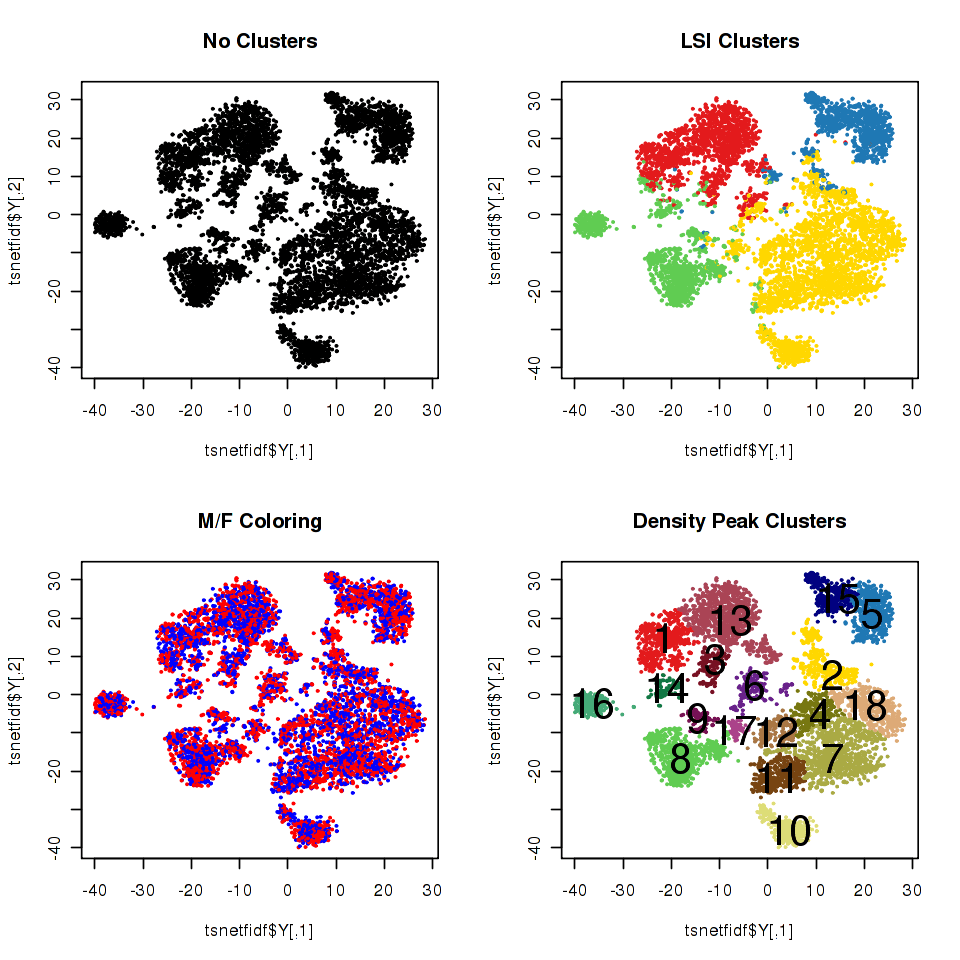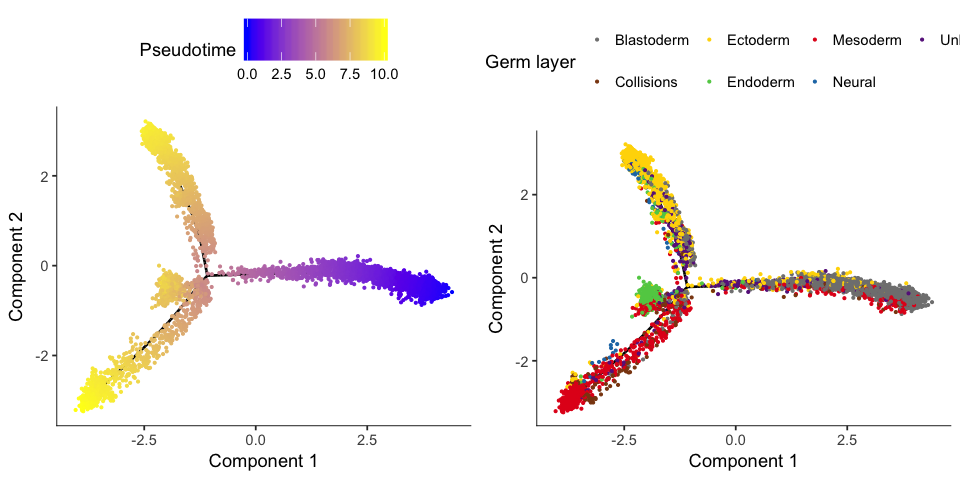A Chromatin Cell Atlas of the Developing Fly Embryo
Chromatin accessibility in developing Drosophila melanogaster embryos at single-cell resolution

In Cusanovich, Reddington, Garfield et al. (Nature, 2018), we reported single-cell ATAC-seq of Drosophila melanogaster embryos at 3 different stages of development (2-4, 6-8, and 10-12 hours after egg laying) using a combinatorial indexing approach (sci-ATAC-seq).
Here, you can download some of the data for yourself and explore how cells clearly cluster into the germ layers by 6-8 hours after egg laying.
We have built this site as a companion to the resources that can be found on the Furlong lab's website. On that site, the Furlong group has produced a genome browser and several other tools so that you can interact with the data visually. We encourage you to have a look to get a sense of the kind of data available! On this site, we hope to give you a sense of the underlying data structures and how you can analyze it yourself. The tutorial section describes how to download some of the data and install required software. In addition, we provide some examples of the types of analyses that were presented in the paper. If you want to dig even further into the data, you can visit our GitHub repository, where we provide instructions for processing the raw sequencing data.
Refine cell clustering to identify cell-types within germ layers

Our analysis in Cusanovich, Reddington, Garfield et al. used the similarity of chromatin accessibility landscapes in individual cells to identify how cell types become epigenomically encoded in the developing fly embryo. At 6-8 hours after egg laying, we identified 18 cell clusters consistent with individual cell types. You can use the code we provide here to see how we clustered cells and explore how various features are distributed across these clusters.
Compare chromatin of germ layers through differential accessibility

Having identified clusters of cells with distinct patterns of chromatin accessibility, an obvious next concern is which sites are open in one germ layer, but not the others. To address this question, we used a logistic regression framework to identify sites that were significantly more accessible in one germ layer. We present some of the code used to do that in this section of the tutorial.
Order cells along developmental trajectories

Finally, we show in the paper that we can arrange these cells along a developmental trajectory in order to learn about the timing of individual regulatory elements opening and closing in development. For this analysis, we focused on the embryos from the earliest time point in our data set (2-4 hours after egg laying). The code for doing this kind of analysis is presented in the fourth section of the tutorial.